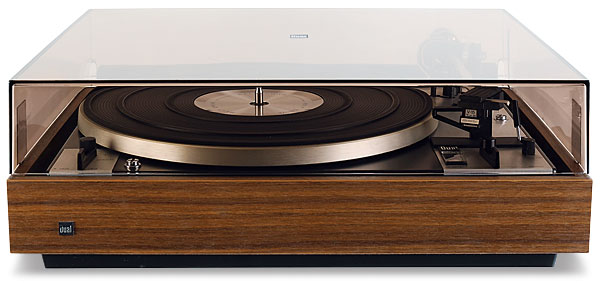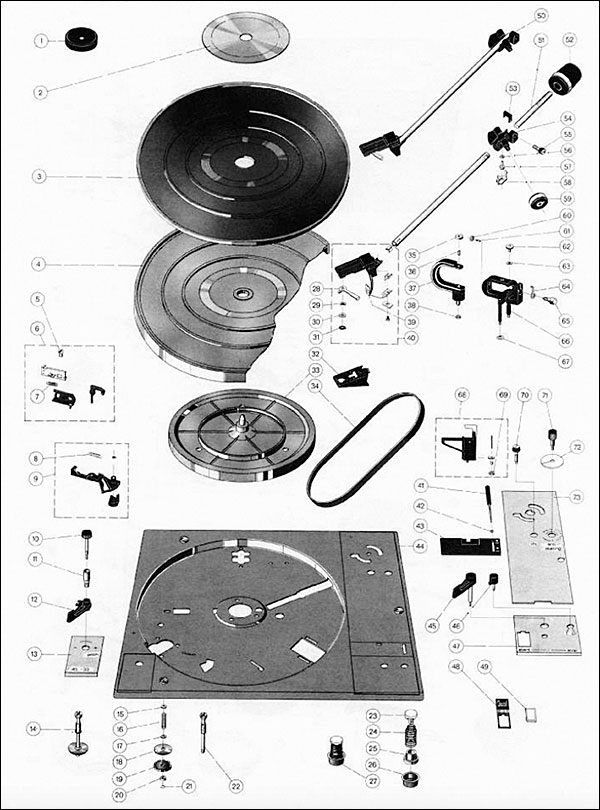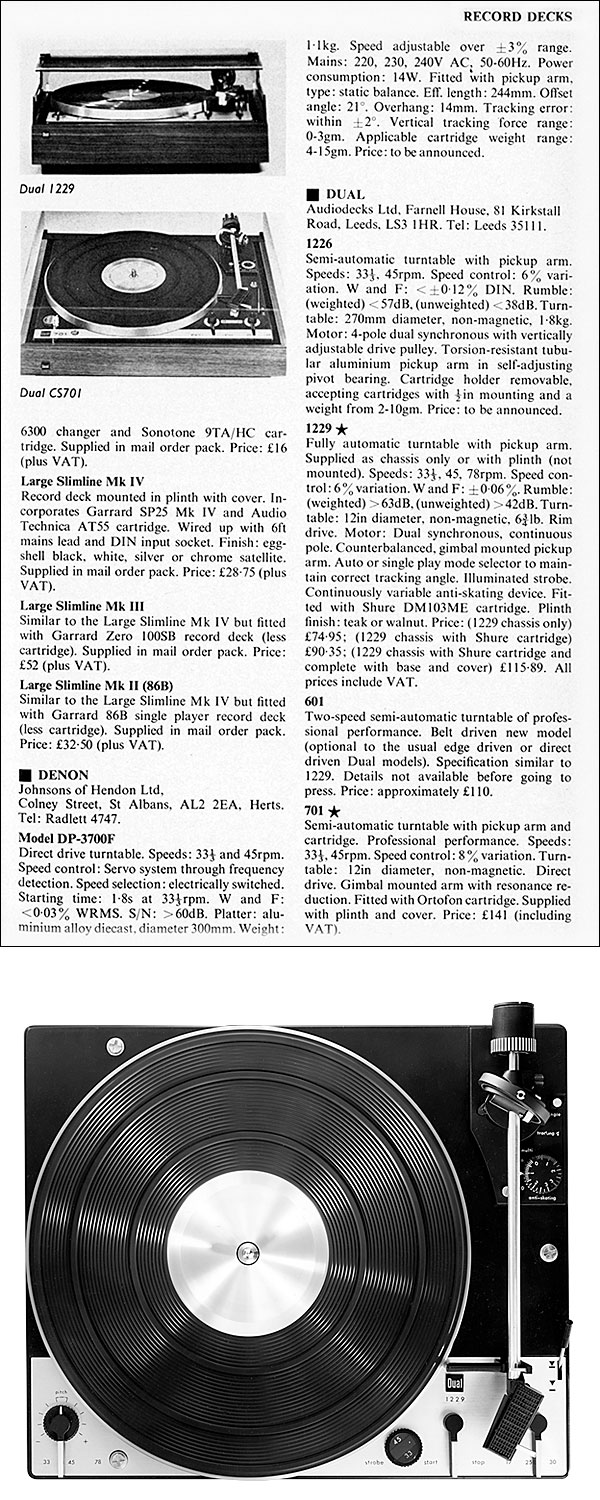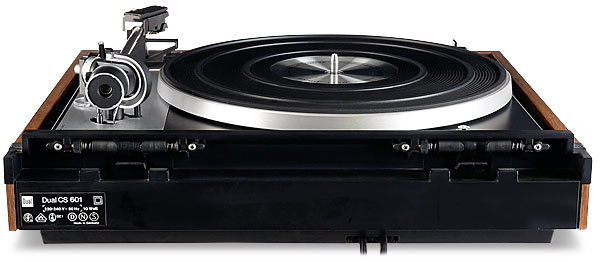Dual CS 601 Turntable Page 2
When it comes to its operation, this is a very pleasant turntable to use, the only fly in the ointment being the difficulty of playing 12in 45rpm singles, which the mechanisms do not allow for. Manual operation is the best way to deal with this issue, of course. The alternative, if using the deck in automatic mode, is to flick the speed lever from 33rpm to 45rpm once the stylus has landed on the record. Needless to say, automatic repeat isn't available for 12in singles.
![]() Tim Listens
Tim Listens
Spinning up our original example of the turntable with a factory-fitted V15/III-LM cartridge in place showed the Shure pick-up to be a good match for the Dual arm. The two combined give the distinctive 'V15 sound', one that is slightly soft but still full of detail. Others may have more bite, but the V15's famous tracking ability ensures a smooth, relaxing listen from all but the most well-used and worn of records.

The title track of Steely Dan's album Aja [ABC AA-1006] was a good example of just what this turntable is capable of. There was a fine sense of poise in a laid-back, easygoing sort of way, with percussion that shimmered rather than crashed and well placed, well integrated vocals. A pleasing bass tubbiness was also noted, for with some arm and pick-up combinations this recording can sound a bit too dry.
The piano revealed very little belt-drive waver, and what I did hear was only really apparent when comparing the same track via a good direct-drive turntable (or from CD). The CS 601 is not unique in this respect, of course, although its slightly restricted soundstage is arguably a more defining characteristic. I felt there was little in the way of extension beyond the centreline of each loudspeaker, and I've heard other decks project a more solid centre presence too, but these are minor complaints against what is a remarkably refined sound overall.
Strauss's Horn Concerto No 2 in E flat [Philips 412 237-1] sounded creamy smooth on the CS 601, the instruments set against a pleasingly quiet background (except for a small amount of buzz from the motor coils, heard directly and not through the loudspeakers) during the opening passages.

Maybe a little more sharpness from the strings on this recording would have added some extra excitement, but the balance offered did allow the piece to be enjoyed at a decent volume level without unrealistic amounts of glare being generated. Again the width of the soundstage appeared limited, but placement of the individual sections of the orchestra within it was notably well defined.
Touch Of Class
As with some of B&O's designs, I don't think this turntable would appeal to those who like the intrinsic sound of the LP format itself. Instead, the CS 601 plays records without making them sound too much like records. The downside is that you never feel like you are in the front row at a performance; others capture a better sense of immediacy but the price can be harshness and fussiness elsewhere.

A different cartridge may well reveal another side to the CS 601 but, as ever, turntables are all about a balance of compromises. In the case of the CS 601 and V15/III-LM combination, this yields a smooth but detailed and well-crafted sound and for those who appreciate properly constructed mechanical things it is a tactile joy. The sturdy, high quality build promises to give many years of trouble free use too.
Buying Secondhand
Always ensure the cartridge carrier is present before buying a secondhand CS 601 because these are hard to find on their own. The silver-plated contact strips onto which the carrier engages can tarnish with age, potentially causing a channel imbalance. Cleaning is straightforward, however, so long as one is careful not to disturb the wiring.
As with the CS 505, the tiny toothed rubber belt in the speed adjustment mechanism can become brittle with age and fall apart. Replacements are available, but are a fiddle to fit. The main drive belt wears too, the first symptom being the deck's reluctance to change from 33rpm to 45rpm.

Normal manual operation but no arm movement during the automatic sequences is usually the fault of a small rubber tip which forms a friction drive under the arm base. These rot away over time and are no longer available, but a replacement can be made with a short length of flexible sleeving.
Hi-Fi News Verdict
This is a fine performer from Dual, which in more recent times was dogged by a budget NAD 3020/Wharfedale Diamond/student-squat image! Well put together, and with a sound that is both smooth and sufficiently revealing, a CS 601 should be a lasting source of musical pleasure provided, of course, it is maintained and looked after. Recommended, especially where automatic operation is required.























































